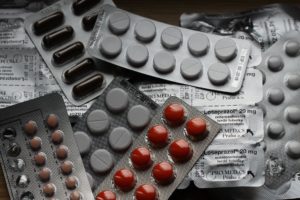Chances are if you’re running a drug and alcohol rehabilitation center, you’re dealing with resident’s medication on a daily basis. With that being said, your facility is licensed by the DHCS and possibly accredited by the Joint Commission as well. Both the DHCS and Joint Commission require facilities that oversee resident medication to follow and have extensive policies and procedures in place. What does your Medication Management Policy entail? We are going to list and explain a few key procedures that should be part of a comprehensive Medication Management Policy to give you an idea of what your facility should be doing.
Into Action Consulting has been training facilities on proper observation, storage, and destruction policies and procedures for a long time. Let us help you!
Centrally Stored Medication – Are you documenting all of the necessary information? Here is a glimpse at what should be documented on all resident’s centrally stored forms. Keep in mind that every resident that has medication has to have a centrally stored medication form.
- Medication name
- Strength/Quantity
- Instructions/SIG
- Expiration date and date filled
- Prescribing physician
- Rx number
- Number of refills and name of pharmacy
To access the form provided by the DHCS, please click the link below:
https://www.dhcs.ca.gov/formsandpubs/forms/Forms/SUDCD/DHCS_5078.pdf

Medication Observation/Administration – This is one of the bigger parts of the Medication Management Policy and should have 100% adherence. Please know beforehand that all medications should be self-administered, and observed. Staff should not physically touch medication outside of the bottle.
- Prior to any staff member observing resident’s self-administration of medication, staff must complete and pass a medication observation competency test.
- Each time a resident is due for medication, the staff observing the medication pass must ensure the correct resident is taking the correct medication by using two identifiers:
- Asking resident their full name and DOB
- Check picture and birth date in EMR
- As good practice, when the medication pass is occurring, the facility’s staff should only hand one medication at a time for self-administration.
- After resident has self-administered medication, staff will notate on medication log that the medication was taken, or document if it was refused.
- A medication count of any mood-altering drugs (controlled medication) is done by staff at the end of each shift. Records of this count will be retained for one year. All medication will be stored in a locked cabinet.
Medication Destruction – The goal of this procedure is to establish uniform guidelines for the safe destruction of all legal and illegal drugs and paraphernalia brought into the facility.
Please note that there are several different ways to properly destroy medication but here is one we recommend to facilities we work with.
If a resident is found to possess a medication or drug paraphernalia without prescription:
- The staff member will immediately report the discovery of illegal drugs to the Operations Director, or Program Director will then document in the medicine destruction log.
- The staff member will then place medicine into sealed bag and write the date and time of incident.
- The staff will place medication bag into the locked medicine cabinet
- If paraphernalia discovered is a syringe it will be disposed of in the Sharps container
- If the medication is an illegal narcotic, the Program Director will have the medication immediately destroyed by sealing it and taking it to an approved destruction site.
Destruction of Medication:
- The Program Director will assign a staff member to take all sealed bags of medicine
identified for destruction to a pharmacy, or approved site, where the pharmacy will
accept the medication for destruction and offer a receipt of its contents. This will be documented and signed by both Program Director and assigned staff. Documentation will include the following information:
- o Name of Resident
- o Prescription number and name of Pharmacy (When applicable)
- o Name, Strength, and Quantity (when applicable) destroyed
- o Date of Destruction
- The Program Director will file the receipt of destruction of medication in the controlled medication file. This will be kept on hand for a period of one year.
These are just a few key points that we wanted to discuss today but there are more important procedures that should be a part of your Medication Management Policy. If you feel you need assistance with this or would like to discuss in more detail, you can always give our office a call or send us over an email. One of our trained consultants will help you get on the right track to having a foolproof Medication Management Policy and walk you through all the procedures that come along with it.
We hope this competency tool below is helpful to you!
Employee Name:_____________________________ House/L.O.C.__________________
Part 1: Knowledge Review – Supervisor To present Medication Management Policy and discuss with employee. Employee demonstrates adequate understanding of the following:
| Key Points | Yes | No | Comments |
| |||
| |||
| |||
| |||
| |||
|
Supervisor (Designee) Signature:____________________Date: _________________
PART 2: Skills Demonstration – Observer to mark appropriate box for each requirement without prompting and intervene if there is any error or risk to client. Make notations accordingly. Employee is to perform a minimum of three successful monitors under direct supervision.
| Direct Observation Step by Step | Yes | No | Notations |
| |||
| |||
| |||
| |||
| |||
| |||
| |||
| |||
|
Observer Signature:___________________________ Date:_________ Time:__________



0 Comments